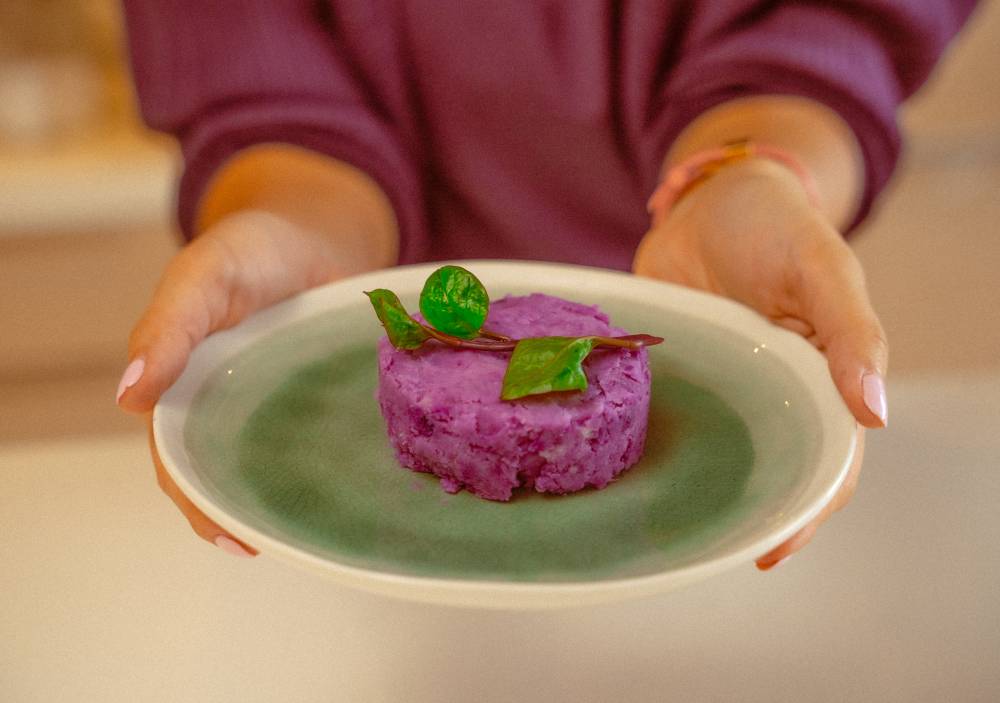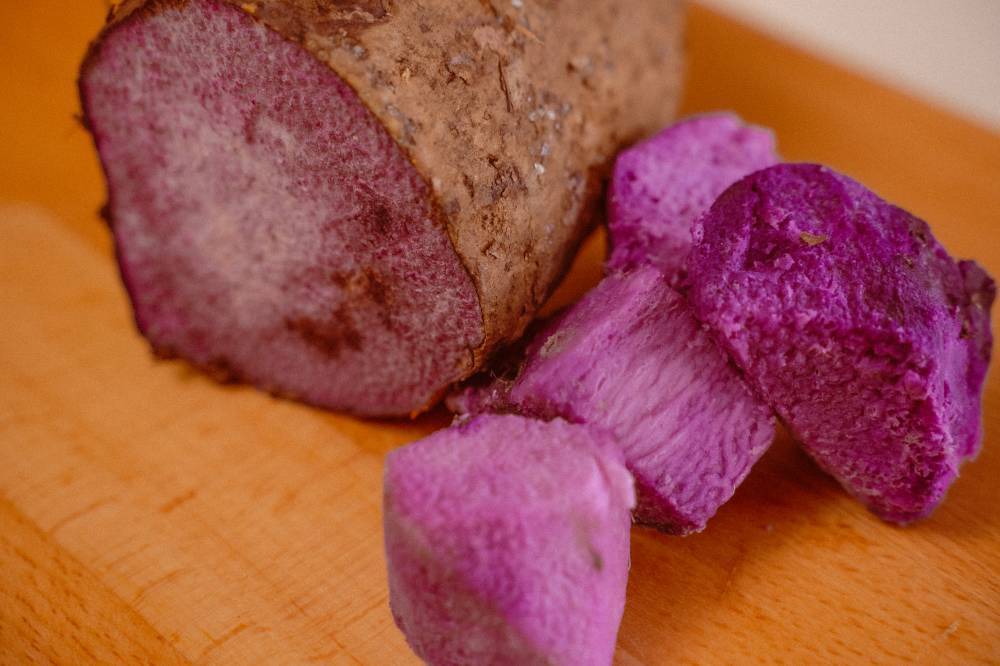Ube can go beyond dessert—use it as a savory side dish, too

Root crops have long been a staple in many cultures across the globe. In Africa, yams and sweet potatoes dominate everyday food, as root crops are full of fiber, vitamins, and minerals. They have also proven to be resilient in the face of climate change, surviving the most drastic of weather shocks. Root crops are a good alternative to grain carbohydrates as their fibrous make-up slows down digestion, releasing the energy more slowly.
In the Philippines, our most popular root crops are ube and kamote, the latter gaining a somewhat lowly reputation, used in a derogatory sense such as “magtanim ka na lang ng kamote” referring to those who are somewhat hopeless in other jobs or trades, or used as an insult, especially when driving: “Tingnan mo yan, kamote talaga!”
Ube, on the other hand, has taken on a higher profile, now recognized internationally as a truly Filipino flavor. The latest incarnation: a version of the viral Dubai chocolate made with pistachio and baklava, now made with ube. In 2023, Forbes magazine named ube the “Uber ingredient of 2023,” citing that Americans first became familiar with our purple yam in 2015 when the Manila Social Club created a $100 ube-filled donut, made with Cristal champagne, ube mousse, and champagne jelly, covered with 24 karat gold.
Across America, Fil-Am chefs have brought ube to the forefront in the form of pancakes, horchata, ube jam spread, mochi, and even a halo-halo cocktail, highlighted by the sweet ube purée.

All over the world, ube has come to be recognized as an ingredient in dessert. Most would not recognize a real ube tuber if they saw one: Its exterior is gnarled, brown, and full of roots, a far cry from the lavish lavender color one will find inside.
Also known as purple yam, ube is native to the Philippines and Southeast Asia. The flavor of ube is distinct: mild, but with a nutty (almost coconutty) aftertaste. Unless it is mixed with lots of sugar, ube has a very mild impact on the taste buds. Much like its yellow or orange cousins—the sweet potato—ube has a mild sweet taste that complements savory food, and can be utilized as a good side dish to most roasts and saucy dishes.
Ube has a fibrous and almost porous texture that allows it to absorb flavors well. In its boiled form, ube has a lower calorie content compared to kamote, making it a good option as a carbohydrate for a meal. Moreover, ube’s purple color makes it rich in anthocyanins, a powerful antioxidant, and adds a pop of color to your plate.
While ube is enjoying its place in the culinary world, it is very much a staple in Filipino agriculture and culture alike. Filipinos have been consuming ube since before the Spanish arrived, and long before it hit the shelves of Trader Joe’s. More than an ingredient du jour, such as matcha, salted caramel, and pistachio, ube will remain a big part of the Filipino diet even long after the hype has died down.
Utilizing ube in your everyday meals is a novel way to increase your diet diversity without all the added sugar. Ube mash is a perfect side dish to roast chicken, grilled fish, or your next pot roast.
Ube’s texture is somewhat grainier compared to kamote as its fibres are seemingly larger, giving it a distinct texture. I like to add a little bit of milk (dairy or non-dairy work just fine) to smooth out its texture, along with butter to add to its creaminess.
My recipe incorporates the flavors of garlic and onion through sauteeing. I found that infusing the ube with the garlic and onion using a little heat makes the flavors more harmonious, rather than finding clumps of garlic in your mash. You’ll find that a whole ube goes a long way; because of its density, one person will only consume about half a cup. Ube is not only gorgeous on a plate but also budget-friendly and will prove to be a showstopper at your next dinner.





















